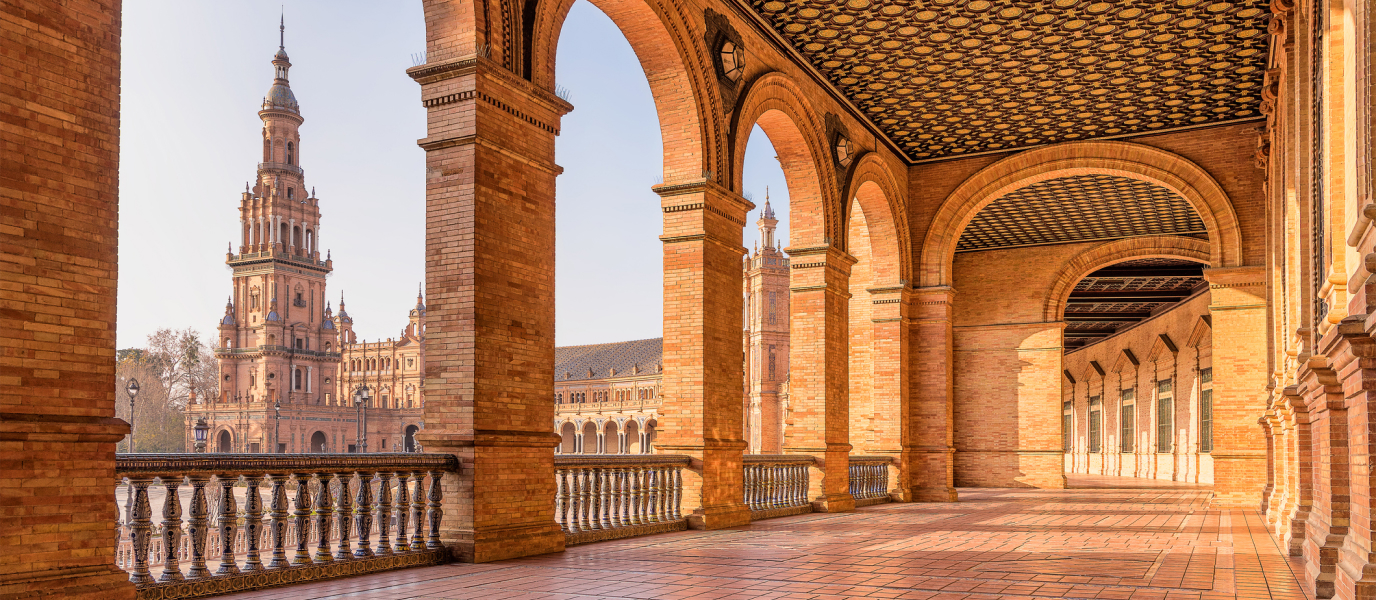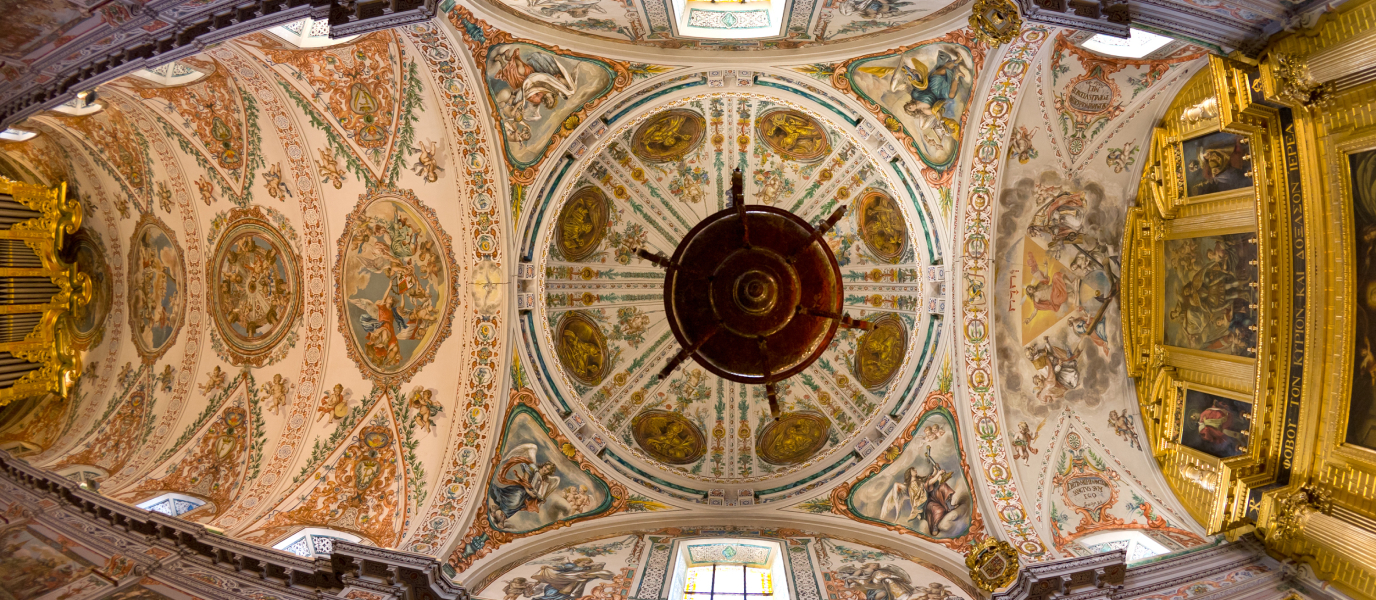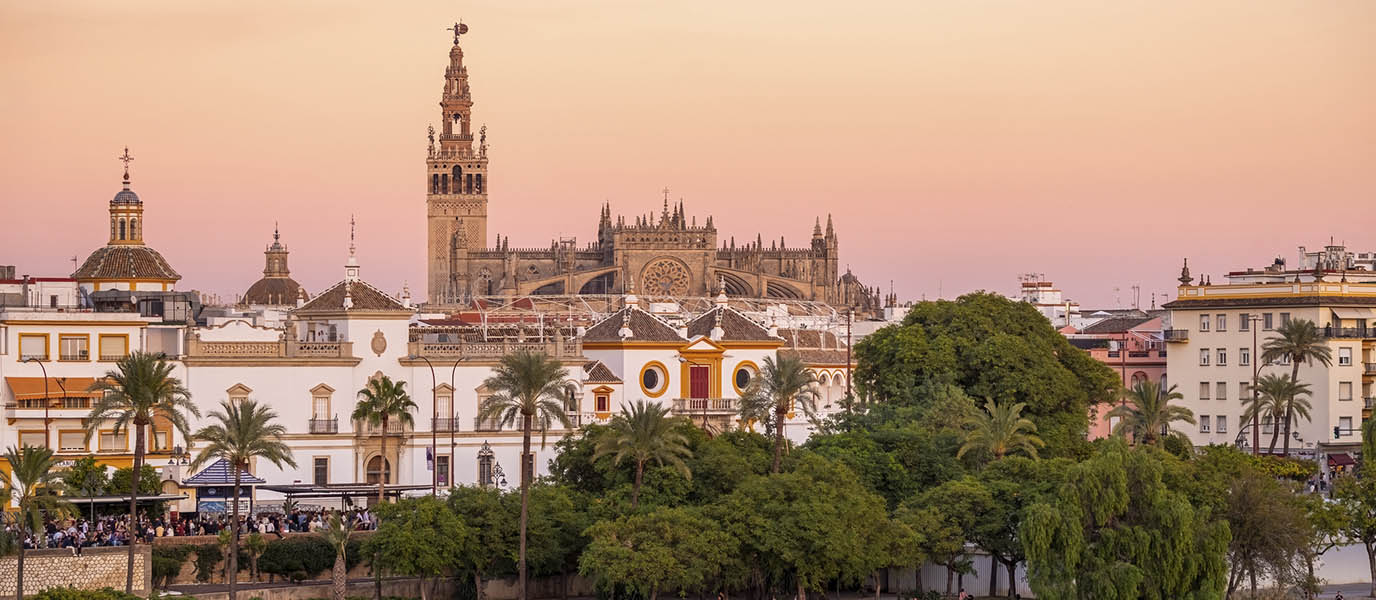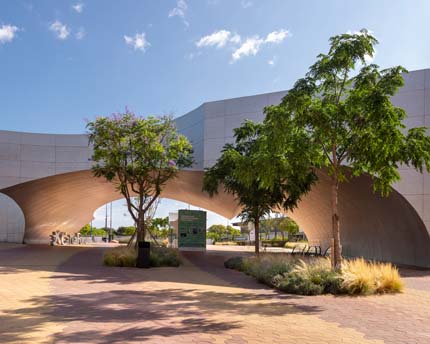Every Spanish province is represented in this amazing square. Seville’s Plaza de España is a large half-circle facing the Guadalquivir River, from which ships began their journey towards America.
Plaza de España was originally created as a symbol of Spain’s history and its bond with American colonies.
It was designed by the great Seville architect Aníbal González. Featuring exposed brick, traditional Triana-style tiling, coffered ceilings and wrought iron, there is a navigable canal along the entire perimeter of the square, crossed by four bridges representing the four ancient kingdoms of Spain (Castile, León, Navarre and Aragón). The two towers at each end of the square sparked controversy while being constructed because academics feared they would overshadow the Giralda.
Covering a total of 50,000 square metres, it took 15 years to build and was completed just one month before the Exposition. Since it is adjacent to Parque de María Luisa (Maria Luisa Park), the nearby lush vegetation is perfect for pleasant strolls.
The provinces in Seville’s Plaza de España
Every Spanish province is represented in Plaza de España in the form of large tiled alcoves. They all share the same layout: the front features a scene from a historic event, with characteristic monuments along the sides and a map of the province on the ground, flanked by a pair of covered bookshelves containing information about that province.
Here are some interesting facts about Plaza de España. There are 48 provinces in total because the Canary Islands only had one at the time and Seville had its own depictions at the beginning and end of each stretch, in the form of scenes about its festivals and customs (internal link). They appear in alphabetical order, although one seems to be in the wrong place. This is because years after the square was completed, the Navarre alcove was changed to Pamplona by removing the scene showing the death of García IV and replacing it with the division of the kingdom. As far as the historical scenes, the one for Castilla-La Mancha stands out because it showcases Don Quijote and Sancho, two literary characters.
The historic events selected to represent each province are:
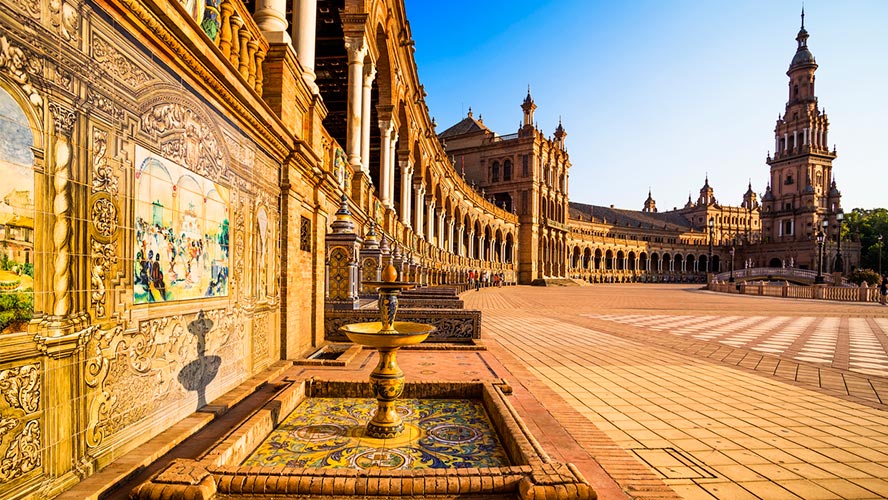
- Álava: Álava being handed over to the Castile Crown during the reign of Alfonso X.
- Albacete: Battle of Almansa during the War of the Spanish Succession, in which the forces of Archduke Charles of Austria were defeated by those of the Bourbon claimant to the Spanish throne.
- Alicante: The city being founded by Hamilcar Barca, who promised eternal hatred against the Roman Empire.
- Almería: Almería being conquered by the Catholic Monarchs in 1489.
- Ávila: Jimena Blázquez’s victory in defending Ávila against the Moors.
- Badajoz: Alfonso IV of León conquering the city that had been controlled by the Moors.
- Balearic Islands: Oath of privileges of the island by James III of Majorca.
- Barcelona: The Catholic Monarchs meeting Columbus in Barcelona’s Tinell Hall upon his return from the Indies.
- Burgos: Alfonso VI of León swearing to “El Cid” that he was not involved in the murder of his brother, Sancho `the Strong’ of Castile.
- Cáceres: The Catholic Monarchs taking the oath to respect the regional charters.
- Cádiz: Promulgation of the Constitution of 1812, also known as La Pepa because it was signed on 19 March.
- Canary Islands: Columbus repairing his ships in las Palmas.
- Castellón: Exile of Pope Luna to Peñíscola.
- Ciudad Real: Don Quijote of La Mancha and Sancho Panza with the windmills.
- Córdoba: The city’s surrender to King Ferdinand III ‘the Saint’.
- Coruña: King Carlos I of Spain in the city’s port, embarking towards Germany.
- Cuenca: Cuenca being conquered by Alfonso VIII.
- Gerona: Gerona’s surrender in 1809.
- Granada: Boabdil handing over the keys of Granada to the Catholic Monarchs in 1492.
- Guadalajara: Wedding between Philip II of Spain and Elisabeth of Valois.
- Gipuzkoa: King Alfonso VIII taking the oath to respect Gipuzkoa’s regional charters.
- Huelva: Columbus setting sail from Palos de la Frontera in 1492.
- Huesca: Founding of the Monastery of San Juan de la Peña, tied to the Kingdom of Aragón’s creation.
- Jaén: French troops being defeated in the Battle of Bailén in 1808.
- León: Proclamation of Alfonso VII of León as Emperor.
- Lérida: Charles, Prince of Viana, being sentenced to prison.
- Logroño: Proclamation of Ferdinand as the ruler of Castile after it was turned over to him by his mother, Berengaria of Castile.
- Lugo: The taking of Lugo by Alfonso I of Asturias.
- Madrid: Second of May Uprising of 1808 against the city’s occupation by French troops.
- Málaga: The city’s conquest.
- Murcia: Copy of Cantiga by King Alfonso X ‘the Wise’ being given to the patron saint of Murcia.
- Navarre: Division of the Kingdom of Navarre.
- Orense: Local residents seeking shelter in the cathedral during the 1462 assault.
- Oviedo: Pelagius founding the Kingdom of Asturias.
- Palencia: Spain’s first university being founded by Alfonso VIII.
- Pontevedra: Defence of Pontevedra.
- Salamanca: Columbus unveiling his plans to the Catholic Monarchs before a professor in Salamanca.
- Santander: Margaret of Austria being welcomed as the fiancé of John, Prince of Asturias.
- Segovia: Coronation of Isabella as Queen of Castile. Years later, she would be granted the title of ‘the Catholic’.
- Soria: Last day of Numantia as it was set on fire by its residents against the Roman assault.
- Tarragona: Meeting between King James I and Catalan merchants to plan the Mediterranean expansion.
- Teruel: Nobles paying their respects to James I ‘the Conqueror’ in Teruel.
- Toledo: Alfonso VI conquering Toledo.
- Valencia: James I ‘the Conqueror’ triumphantly entering Valencia.
- Valladolid: Wedding of the Catholic Monarchs.
- Biscay: Pacification of the two sides by Ferdinand ‘the Catholic’.
- Zamora: Ferdinand ‘the Catholic’ after the victory of Toro.
- Zaragoza: Compromise of Caspe that established Ferdinand of Castile as king in 1412.
Boat ride along the canal
Near the entrance to the square, visitors can rent a boat in which to travel the 515 metres of the canal at Seville’s Plaza de España, for a different perspective of the square and its bridges. This canal represents Spain’s bond with the colonies in a journey across the water in a round planet.
From here, it is possible to see the busts between the arches of some of the key figures in the nation’s history, such as Séneca, Quevedo, Carlos I and Velázquez. The rental options include rowing boats for up to four people or motorised boats for up to 12. They are available from 10:00 AM to 10:00 PM in the summer, and until 8:00 PM in the winter.
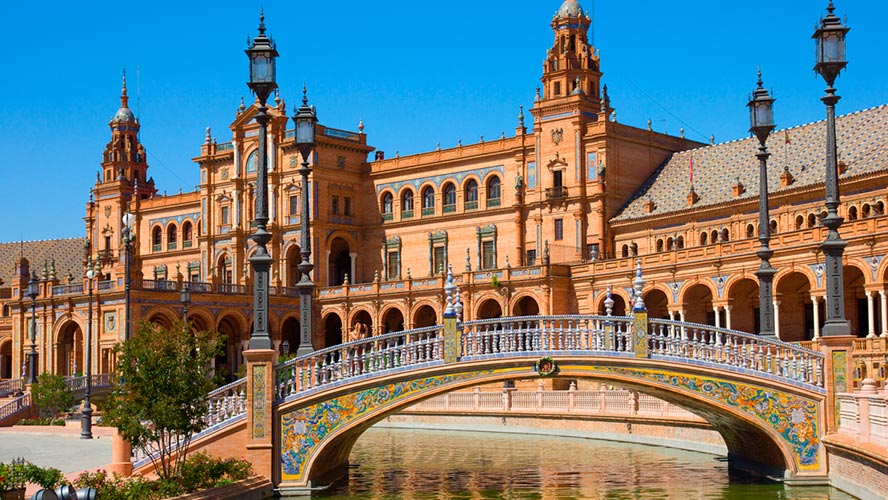
Plaza de España in Star Wars
Star Wars used Seville’s Plaza de España as a filming location for Naboo in Episode II: Attack of the Clones. In the scene, which lasts two minutes, Senator Amidala appears with Anakin Skywalker and R2-D2, as they cross one of the bridges and walk along the covered arcade. Although it was digitally altered and transformed into a complete circle, Seville’s famous square can be easily recognised and has become a popular destination for Star Wars fans.
It has also been used as a filming location for other productions, including Lawrence of Arabia, The Dictator and The Wind and the Lion, and the European Film Academy has added the square to the Treasures of European Film Culture.




































































